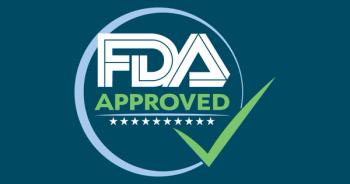
- August 2025
- Volume 41
- Issue 5
Empowering children with disabilities: A pediatrician’s guide to breaking financial and health barriers with ABLE accounts
Pediatricians empower families of children with disabilities by promoting ABLE accounts, enhancing financial security and access to essential resources.
Financial assets are more than just a measure of wealth—they serve as a foundation of resilience and opportunity that enables young people with disabilities to transcend the limitations imposed on them by others.
Economic factors have long been an appreciated social determinant of health that impacts wellness and longevity. In appreciation of how financial hardships can exacerbate poor health outcomes, particularly among children, the American Academy of Pediatrics has recommended that families be screened for financial difficulty during routine medical appointments.1 Once identified, steps may be taken to help integrate families into services in an attempt to ultimately improve health outcomes. Innovative programs, such as clinic-based financial coaching among parents with low incomes, are elevating our understanding of social determinants of health and have even demonstrated improved attendance to preventive pediatric care visits and vaccination status.2
People with disabilities may experience exaggerated adverse outcomes related to economic factors when compared to nondisabled peers. Households with adult disabled members have lower net worth and incomes,3 reduced emergency savings funds,4 and reduced employment rates.5 Some studies suggest that one-third of working-aged people with disabilities struggle to pay expenses and have minimal emergency savings and excessive debt.6 Although a myriad of factors, such as bias or activity limitations, may create barriers to employment for people with disabilities, engagement restrictions with public benefit programs such as Medicaid and Supplemental Security Income (SSI) are often an underappreciated obstacle. For example, individuals receiving SSI must adhere to strict asset limits, which as of 2024 were $2000 for individuals and $3000 for couples.7 As a result, many are unable to save or invest without jeopardizing their benefits, effectively forcing them to live on the edge of economic insecurity.
ABLE accounts are a powerful financial tool designed to help individuals with disabilities and their families save for disability-related expenses without affecting eligibility for government benefits.8 Despite their benefits, ABLE accounts remain underutilized, with surveys suggesting that 93% of eligible individuals are unaware of them.6
Given these financial barriers, pediatricians—who often serve as long-term advocates for children with disabilities—can play a pivotal role in helping families navigate resources such as ABLE accounts. By being aware of ABLE accounts, pediatricians can guide families in accessing financial tools that will allow them to save for their child’s disability-related needs without jeopardizing critical support services such as Medicaid and SSI. The following serves as a primer for pediatricians on ABLE accounts.
ABLE account background
Established in 2014 through The Stephen Beck Jr Achieving a Better Life Experience (ABLE) Act,10 ABLE accounts are tax-advantaged savings and investment accounts designed to help individuals with disabilities and their families save for disability-related expenses. With ABLE accounts, individuals can save and invest up to $100,000 without risking SSI benefits, and earnings and withdrawals are tax free if used for qualified disability expenses.9 All US states except for Idaho, North Dakota, South Dakota, and Wisconsin offer ABLE accounts, and many states allow for nonresident enrollment.10 Finally, some states offer state income tax deductions or credits for contributions to ABLE accounts.10
Eligibility
To qualify for an ABLE account, an individual must have a disability that began before aged 26 years (expanding to aged 46 years in 2026). Additionally, the individual must meet at least 1 of the following criteria: be receiving Social Security Disability Insurance, be receiving or entitled to receive SSI, have a condition listed on the Social Security Administration’s list of Compassionate Allowances Conditions that causes marked and severe functional limitations, or have a written diagnosis from a physician confirming a physical or mental impairment that results in marked and severe functional limitation.11
Both general and subspecialist pediatricians frequently encounter patients with conditions that require costly care and may benefit from ABLE accounts, including trisomy 21, cerebral palsy, spinal cord injuries, autism spectrum disorder, complex congenital heart disease, and inborn errors of metabolism.
Eligible expenses
Funds from ABLE accounts can be used for numerous eligible expenses, such as housing (including rent, mortgage, property taxes, and utilities), education, transportation, health care, employment training, assistive technology, personal support services, funeral, burial, legal fees, prevention, and wellness.11
Contributions
Most states require an initial minimum contribution of $25 to open an ABLE account. As of 2025, the baseline yearly maximum contribution to ABLE accounts is $19,000. However, if the account beneficiary is employed, additional contributions may be made. Contributions to an ABLE account may come from several sources, including the account owner, family, friends, settlements, and fundraisers. Maximum balances within accounts vary by state but range from $234,000 to $596,000.12
Savings and investments
ABLE accounts benefit from tax-free investment returns and withdrawals for qualified expenses. Most ABLE accounts offer multiple investment options with a mix of stocks, bonds, and cash equivalents. The exact constitution of investment options for ABLE accounts varies by state. The Table13 highlights the breakdown of asset classes within the different investment options available in the Illinois ABLE plan.
Conclusion
Although pediatricians routinely advocate for their patients’ medical needs, they also have an opportunity to guide families toward financial tools that can help secure their child’s future. ABLE accounts provide a critical solution, allowing families to save and invest in a tax-advantaged manner for disability-related expenses without jeopardizing essential benefits such as Medicaid and SSI. Despite their advantages, these accounts remain underutilized, largely due to a lack of awareness.
Pediatricians, like many professionals, face pressure to perform more responsibilities in shorter periods of time. Although it is unrealistic for pediatricians to provide comprehensive counseling on ABLE accounts consistently, we hope that this primer provides a foundation for pediatricians to recognize when a patient may be eligible and guide families to explore their options. For more information, families should be referred to their state’s ABLE program or the ABLE National Resource Center.
By increasing awareness, pediatricians can help families overcome financial barriers, ensuring children with disabilities have access to essential resources for long-term stability and success.
References:
- Council on Community Pediatrics. Poverty and child health in the United States. Pediatrics. 2016;137(4):e20160339. doi:10.1542/peds.2016-0339
- Schickedanz A, Perales L, Holguin M, et al. Clinic-based financial coaching and missed pediatric preventive care: a randomized trial. Pediatrics. 2023;151(3):e2021054970. doi:10.1542/peds.2021-054970
- Parish SL, Grinstein-Weiss M, Yeo YH, Rose RA, Rimmerman A. Assets and income: disability-based disparities in the United States. Soc Work Res. 2010;34(2):71-82. doi:10.1093/swr/34.2.71
- Goodman N, O’Day B, Morris M. Financial Capability of Adults With Disabilities. National Disability Institute; 2017. Accessed February 15, 2025. https://www.nationaldisabilityinstitute.org/wp-content/uploads/2019/01/ndi-finra-report-2017.pdf
- Persons with a disability: labor force characteristics—2024. News release. US Bureau of Labor Statistics. February 25, 2025. Accessed March 3, 2025. https://www.bls.gov/news.release/pdf/disabl.pdf
- Warren A, Chege W, Greene M, Berdie L. The financial health of people with disabilities: key obstacles and opportunities. Financial Health Network. August 10, 2023. Accessed March 3, 2025. https://finhealthnetwork.org/research/the-financial-health-of-people-with-disabilities/
- Understanding Supplemental Security Income SSI resources — 2024 edition. Social Security Administration. Accessed March 3, 2025. https://www.ssa.gov/ssi/text-resources-ussi.htm
- Roll S, Ferris D, Bufe S, Kondratjeva O. Designing savings accounts to promote asset building for individuals with disabilities: experimental evidence on ABLE accounts. J Disabil Policy Stud. Published online December 24, 2024. doi:10.1177/10442073241304109
- Program Operations Manual System (POMS): SI 01130.740 Achieving a Better Life Experience (ABLE) accounts. Social Security Administration. Updated January 3, 2025. Accessed March 3, 2025.
https://secure.ssa.gov/poms.nsf/lnx/0501130740 - Choose the program that’s right for you! ABLE National Resource Center. Accessed March 3, 2025.
https://www.ablenrc.org/select-a-state-program/ - Spotlight on Achieving a Better Life Experience (ABLE) accounts — 2024 edition. Social Security Administration. Accessed March 3, 2025.
https://www.ssa.gov/ssi/spotlights/spot-able.html - Frequently asked questions. ABLE National Resource Center. Accessed March 3, 2025.
https://www.ablenrc.org/frequently-asked-questions/ - Investment options. Illinois ABLE. Accessed March 3, 2025.
https://illinoisable.com/investment-options.html
Articles in this issue
5 months ago
Congenital ear lesion in a 10-year-old girlNewsletter
Access practical, evidence-based guidance to support better care for our youngest patients. Join our email list for the latest clinical updates.








